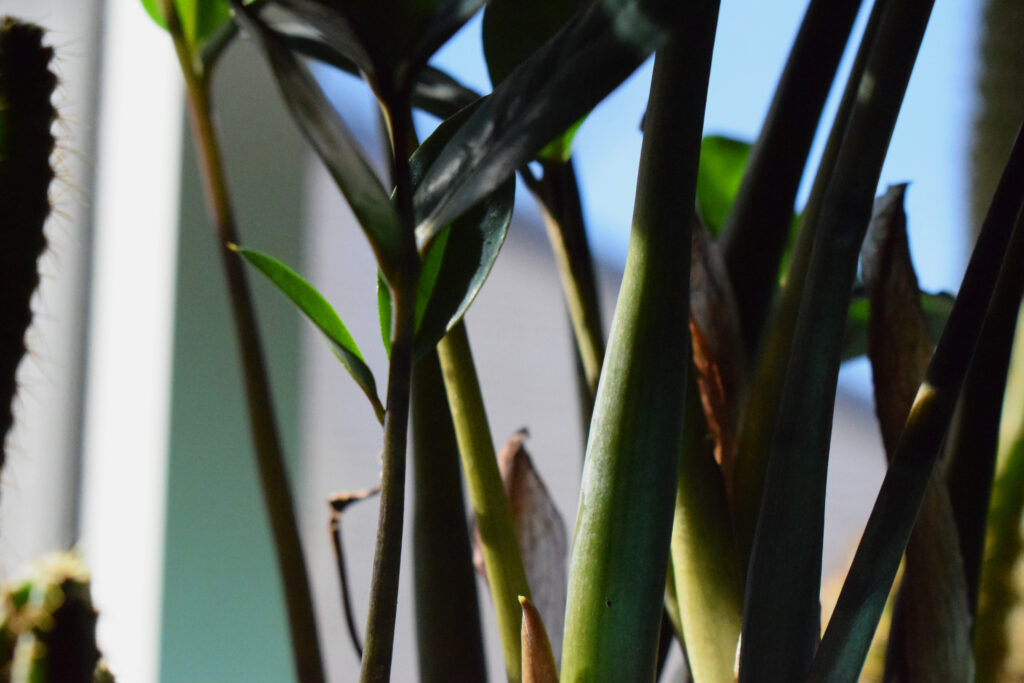
So what do I need to know about ZZ Plant Care?
When I first got my ZZ plant (Zamioculcas zamiifolia), also known as the Zanzibar Gem, I was looking for something that wouldn’t need constant attention. A low-maintenance houseplant that could thrive despite my busy schedule and occasional lapses in watering routine sounded like a dream. The ZZ plant did not disappoint! This sturdy little beauty has surprised me by how quickly it grew, with thick, tall stalks that seem to reach for the sky. The fact that it’s so forgiving is why I’ve decided to write this ZZ plant care guide! Since it’s so easy, any gardener can use this plant as an entryway to the gardening world!
ZZ plants are incredibly popular for good reasons—they’re tough, hardy, and can tolerate a wide range of conditions. Whether you’re a seasoned plant parent or just starting your indoor gardening journey, ZZ plant care is a breeze. Even if you don’t have the brightest window or the greenest thumb, this plant can thrive with minimal effort. I’ve even seen them thriving in conference centers, sitting pretty in large containers and reaching heights of three feet! How cool is that?
One of the best things about ZZ plants is their ability to thrive in low-light conditions. While some plants need lots of sunlight to stay happy, ZZ plants are much more flexible. Stick them in a dark corner or a bright room, and they’ll still grow, slowly but surely. It’s this easygoing nature that has earned the ZZ plant a reputation as one of the best low-maintenance houseplants around.
ZZ Plant Care Basics
The ZZ plant has a unique look that makes it a striking addition to any indoor space. With its thick, waxy, and glossy leaves that grow in a neat, upright pattern, it’s both elegant and eye-catching. Each stalk of the ZZ plant is lined with smooth, green leaves that always seem to shine. As the plant matures, it can grow up to 2-3 feet tall! This makes it a great choice if you’re looking for something that has a presence.
ZZ plants also store water in rhizomes, which are thick structures that grow underneath the soil. These rhizomes are what make the plant so drought-tolerant! ZZ plants can go weeks without water, drawing moisture from their rhizomes when they need it. This means that ZZ plant care doesn’t involve a strict watering schedule. Which makes it perfect for those who tend to forget about their plants every now and then. And we all forget sometimes, right?
ZZ plants hail from East Africa, specifically from the regions of Kenya, Tanzania, and Zanzibar (hence the nickname “Zanzibar Gem”). In their native environment, they’re used to surviving in dry, rocky soil with minimal water, which explains their ability to thrive indoors with minimal fuss. This hardy nature makes them incredibly resilient and perfect for anyone who wants a houseplant that won’t be too demanding.
However, there is one important thing to note about ZZ plants: they are mildly toxic if ingested. So, if you have curious pets or children who might nibble on the leaves, it’s best to keep your ZZ plant out of reach. Ingestion can cause nausea, vomiting, and other digestive issues. But don’t worry too much! As long as you’re not planning on using your ZZ plant in a salad, you should be just fine. Just a little heads up to keep everyone safe and happy!
Light Requirements
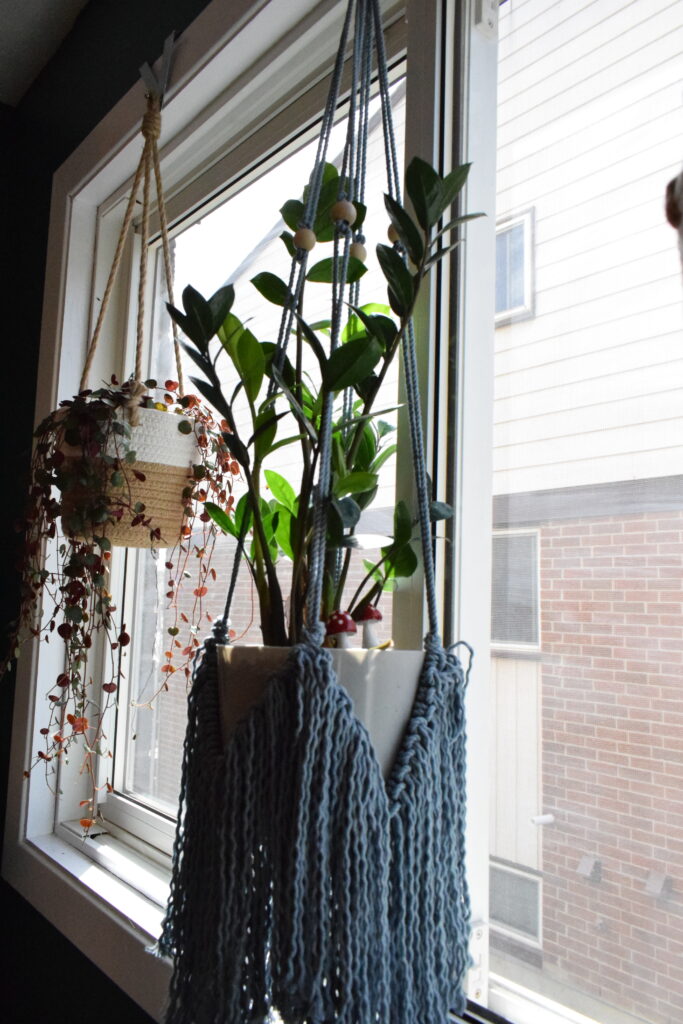
When it comes to light, ZZ plants are incredibly flexible. They prefer bright, indirect light but can tolerate low light without too much fuss. In fact, ZZ plants are one of the few houseplants that can handle low-light conditions well. This makes them ideal for spaces where sunlight is scarce. I’ve had my ZZ plant in different spots around my home, it’s been content in each one. I currently have it hanging near a window where it gets some indirect light, and it seems to be thriving. I can honestly say that the move from a darker shelf to a brighter spot really helped it flourish.
That said, one of the cool things about ZZ plants is their adaptability. Whether you place them in a brightly lit room or a dim corner, they’ll adjust to the conditions and keep on growing, albeit more slowly in low light. If you’re like me and enjoy rearranging your plants from time to time, this is perfect! You’ll love that ZZ plants can adapt to whatever lighting conditions you throw at them. Just keep in mind that they’ll grow faster in bright, indirect light. So if you want to encourage quicker growth, give them a little more light.
One thing to be cautious of, though, is direct sunlight. ZZ plants don’t appreciate being in the spotlight (literally). Direct sun can scorch their leaves, causing them to yellow or brown. If you do have your ZZ plant in a window, make sure it’s shielded from harsh, direct rays. A sheer curtain can do wonders in filtering the light to keep your plant happy. That way, your ZZ plant can bask in the sunshine without getting a sunburn—just another part of ZZ plant care that’s simple yet important!
Watering ZZ Plants
When it comes to watering, ZZ plants are wonderfully low-maintenance. Because they have rhizomes that store water, they don’t need to be watered as often as other houseplants. In fact, overwatering is one of the biggest mistakes people make with ZZ plant care. These plants prefer to dry out completely between waterings, so if you’re unsure whether to water, it’s better to wait a few more days. Trust me, your ZZ plant will thank you for it.
My watering routine for my ZZ plant is pretty simple: I wait until the soil is completely dry 2-3 inches deep before giving it a good soak. Depending on the time of year, this can mean watering every couple of weeks or even less frequently. Since the plant can store water in its rhizomes, it’s well-equipped to handle periods of drought. I love that I don’t have to worry about it wilting if I forget to water it for a while!
Overwatering, on the other hand, can be disastrous for ZZ plants. When their roots sit in waterlogged soil for too long, they can develop root rot—a common problem for overwatered houseplants. Root rot can cause the leaves to turn yellow and mushy, and it can eventually kill the plant. To avoid this, always make sure that the soil has dried out completely before watering again. If your plant’s pot doesn’t have drainage holes, it’s time to repot into something that does. Because proper drainage is key to avoiding overwatering issues for the ZZ Plant.
During the winter months, ZZ plants enter a period of dormancy, which means they need even less water than usual. I typically water mine even more sparingly in the winter, allowing the soil to stay dry for longer periods. ZZ plant care during the winter is really about leaving them alone and letting them rest, which is something I think we can all appreciate during those cold months!
Soil and Potting Needs
ZZ plants aren’t too picky about soil, but they do need well-draining soil to thrive. I like to suggest a cactus or succulent mix for ZZ plants, as it provides good drainage and keeps the roots from sitting in water for too long. If you prefer, you can also mix regular potting soil with some perlite or sand to create a similar effect. The goal is to make sure that water can flow freely through the soil and that the roots don’t stay soggy.
When it comes to potting, ZZ plants don’t need to be repotted often. In fact, they prefer to be slightly root-bound, so you only need to repot them every 2-3 years or when they’ve outgrown their current pot. When you do repot, be gentle with the rhizomes! They’re a crucial part of the plant’s water storage system, you don’t want to damage them by loosening the roots. I always find it fascinating to see the rhizomes when I’m repotting my ZZ plant—they look like little potatoes hiding just beneath the surface!
The key to successful repotting is choosing a pot with drainage holes. Without proper drainage, water can pool at the bottom of the pot and lead to root rot, which we definitely want to avoid. I like to choose a pot that’s just a bit larger than the current one—about an inch or two wider in diameter—so that the plant has room to grow without feeling overwhelmed by too much space. With the right soil and a well-draining pot, your ZZ plant will have everything it needs to keep thriving for years to come.
Temperature and Humidity Preferences
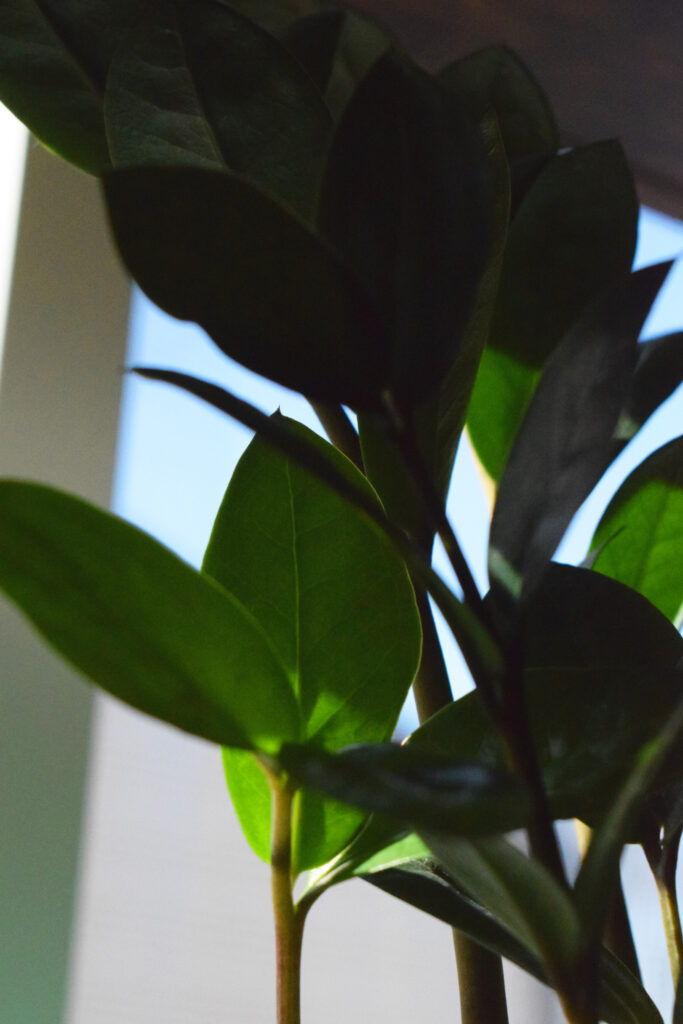
ZZ plants are pretty easygoing when it comes to temperature. They do well in average room temperatures between 65-75°F, which is around 18-23°C for my fellow Canadians. This makes them a great choice for most indoor environments, as they’ll be perfectly comfortable in the same temperatures that we enjoy. Just be sure to keep them away from drafty windows or doors, as sudden temperature changes can stress them out.
When it comes to humidity, ZZ plants are just as adaptable. They can handle low humidity levels, which is great news for those of us living in drier climates or who don’t want to fuss with a humidifier. However, like most houseplants, ZZ plants do appreciate a bit of extra humidity! Especially during the winter when indoor air tends to be drier. If you want to give your ZZ plant a little boost, you can mist it occasionally or place it near a humidifier, but it’s not strictly necessary. ZZ plant care is all about keeping things simple, and this plant will thrive even in less-than-ideal humidity levels.
Fertilizing ZZ Plants
Fertilizing your ZZ plant is another area where less is more. These slow-growing plants don’t need a lot of extra nutrients, so a little goes a long way. I like to use a liquid fertilizer, and I only fertilize my ZZ plant 1-2 times during the growing season, which typically falls in the spring and summer. Over-fertilizing can do more harm than good, so it’s better to err on the side of caution and keep the feeding schedule light.
ZZ plants don’t need fertilizing during the fall and winter, as they enter a period of dormancy and their growth slows down. During this time, I let my plant rest and skip the fertilizer altogether. By sticking to a light fertilizing routine during the growing season, you’ll give your ZZ plant the nutrients it needs without overwhelming it. As with all aspects of ZZ plant care, keeping it simple is the key to success!
Common Problems and Solutions
Even though ZZ plants are incredibly hardy, they’re not entirely immune to problems. One issue you might encounter is yellowing leaves, which can be a sign of overwatering. If you notice that the leaves are turning yellow, it’s a good idea to check the soil and make sure it’s not too wet. If the soil feels damp, cut back on watering and let it dry out before giving the plant more water. Yellowing leaves can also be a sign of too much direct sunlight, so if your plant is in a bright spot, consider moving it to a more shaded area.
Pests are another occasional problem with ZZ plants, though they’re not as prone to infestations as some other houseplants. Spider mites and scale can sometimes make an appearance, especially if the plant is stressed. If you notice any pests on your ZZ plant, you can treat them by wiping down the leaves with a damp cloth or using a gentle insecticidal soap. Regularly checking your plant for pests and keeping the leaves clean can help prevent infestations from getting out of hand.
Root rot is one of the more serious issues that ZZ plants can face, but fortunately, it’s preventable with proper watering practices. If you suspect your plant has root rot (you’ll notice the leaves turning yellow and mushy, and the roots may be soft and black), you’ll need to act quickly to save it. Remove the plant from its pot, trim away any affected roots, and repot it in fresh, well-draining soil. Hopefully, you’ll never have to deal with root rot, but being mindful of your watering routine is the best way to avoid it.
Pruning and Propagation
Pruning your ZZ plant is a great way to encourage bushier growth and keep it looking tidy. I like to prune mine in the spring when it’s entering its growing season. You can trim off any dead or yellowing leaves, as well as any stems that are getting too long for your liking. Just be sure to use clean, sharp scissors or pruning shears to make clean cuts that won’t damage the plant.
Propagation is another fun aspect of ZZ plant care, and it’s surprisingly easy to do. The simplest way to propagate a ZZ plant is by division. When you’re repotting your plant, you can carefully separate some of the rhizomes and plant them in a new pot. It’s a straightforward process, and before you know it, you’ll have a new ZZ plant to add to your collection or gift to a friend. If you’re patient, you can also propagate ZZ plants from leaf cuttings, though this method takes much longer.
That’s All You Need To Know About ZZ Plant Care!
My journey with ZZ plants has been nothing short of rewarding. From the first time I brought one home to watching it grow and thrive in different spots around my house, this plant has never failed to impress me with its resilience and low-maintenance nature. It’s become one of those plants that I recommend to everyone, whether they’re seasoned plant enthusiasts or total beginners. ZZ plant care is truly as easy as it gets, and the satisfaction of watching it grow without much effort is a delight.
If you’re looking to expand your collection, you might also want to check out the ZZ Raven—a striking black version of the classic ZZ plant. It’s perfect if you’re in the mood for something a little different and adds a unique touch to any indoor garden.
So if you’ve been thinking about adding a ZZ plant to your home, I say go for it! They’re beautiful, forgiving, and can thrive in just about any environment. Plus, the joy of caring for a ZZ plant is that it never feels like a chore—just a simple, rewarding experience that brings a little more green into your life.
Discover more from Savage Gardener
Subscribe to get the latest posts sent to your email.


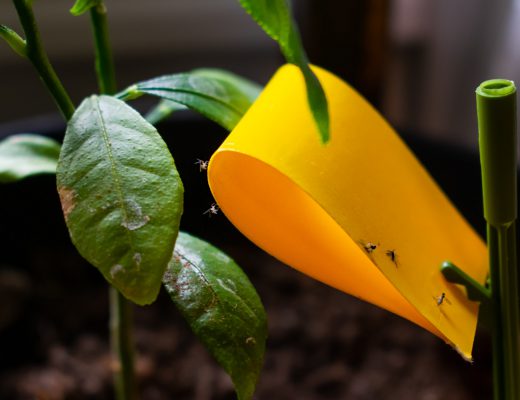
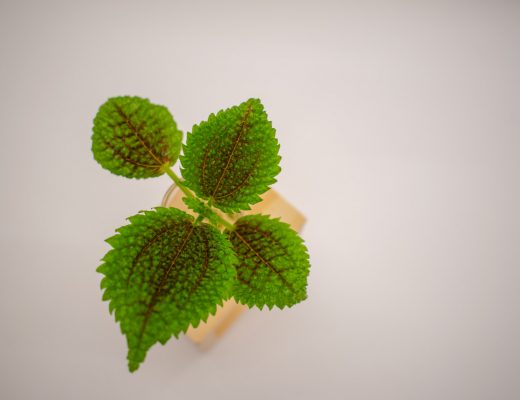
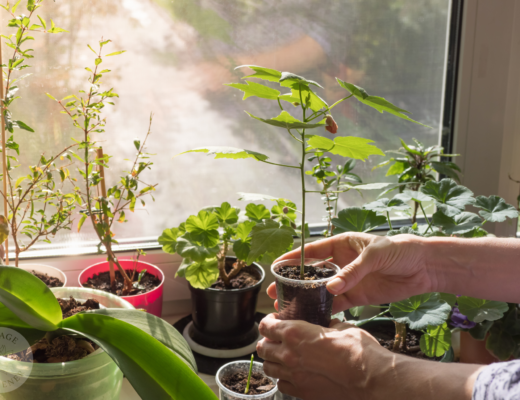
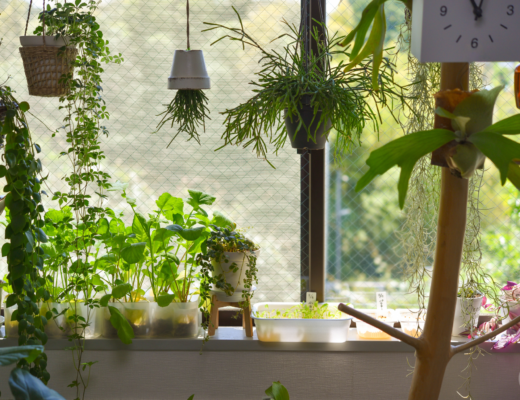
2 Comments
Dorothy
August 19, 2024 at 2:32 pmYou make everything sound so interesting! I may yet take up indoor gardening 😉
Brianna Rockett
September 3, 2024 at 11:13 pmYou should!!